What Platforms Do Working Class Voters Use to Get News and Information – And Do They Trust Any of It?
In a massive survey of thousands of voters, we found the working class trusts mainstream news sources less than the overall population – and they use YouTube and TikTok more.
We’re back this week with another update from the largest research effort to understand why working class voters are trending away from Democrats.
This week, we have more data from our 7,500+ person survey of media consumption habits among U.S. voters, including 2,000+ working class voters. Take a look at last week’s Substack post if you haven’t yet. We laid out all the details about how this survey was conducted, and we shared information about how and when to reach the working class. This week, we want to unpack more information about the specific platforms they use and the news sources they trust.
This was a huge survey across our 21 target states, seeking to understand overall media consumption. By learning about the way working class voters use different platforms to consume information, we can identify stronger ways to reach them going forward.
THE TL;DR
The media landscape and how working class voters consume information is changing.
Compared to the overall population, working class voters are less likely to trust most news sources. A notable exception is YouTube, which working class voters are more likely to trust more than the overall population.
Local TV news and newspapers are the only news sources with a net-positive trust rating among the working class. The next closest? NPR. All three major cable news networks are at least 30 points underwater on trust.
But more working class voters are turning to YouTube, Facebook and TikTok to actually get their news. Two-thirds of working class voters use YouTube, and news is the top category of YouTube content they consume. Facebook remains a dominant platform for getting news, but TikTok gets higher usage among the working class than the overall population, especially among working class women.
WHAT NEWS SOURCES DO WORKING CLASS VOTERS TRUST?
Over the past few decades, trust in traditional news sources among Americans has dropped significantly. In our survey we focused on what we’ll call “the trust gap” – which is the difference between trusting and distrusting a source.
We found that, overall, working class voters have a larger negative trust gap with most news sources than the general population. A notable exception to this is YouTube, which is more distrusted among the general population than among working class voters.
The most trusted news source for working class voters is local news – either local TV news or local newspapers. Like with the general population, it is the only news source with a positive trust rating, though it is lower among working class voters than the general population.
There’s a notable gender gap when it comes to working class voters’ trust in news sources. Working class men are much more distrustful of traditional mainstream media news sources like broadcast and cable news networks than women.
Working class voters’ overall distrust of news sources tracks sentiment we’ve heard throughout the Working Class Project in focus groups and other research. These voters feel like few if any institutions speak to them or their interests, and they are generally skeptical and cynical about the status quo. It’s easy to see how that would translate to a news media that has calcified in old ways and often focuses on issues, controversies, and conflicts seen as irrelevant to working class voters’ daily lives.
SO WHAT PLATFORMS ARE WORKING CLASS VOTERS USING, AND HOW ARE THEY USING THEM?
YouTube is a significant platform for working class voters. Working class voters are more likely to use YouTube than the overall population – with 2 in 3 working class voters using it. Working class voters tend to watch more news-related content on YouTube than anything else, followed by music and how-to videos.
Something we have heard anecdotally in our focus groups is that working class voters may often hear news through mainstream sources but then go to YouTube to “verify” it with more information from sources they view as less biased or backed by establishment entities. This trend raises the stakes for the types of news-related content that spreads on YouTube and stresses a finding we first shared last week that social media algorithms may play a larger role in how working class voters get information versus other voter groups.
Half of working class voters are regularly using Facebook and YouTube for news consumption – eclipsing newspapers and podcasts.
One in ten working class voters say they use YouTube or TikTok most for their news consumption – but there’s a notable gender gap. Men are more likely to name YouTube, and women are more likely to name TikTok.
In our media diaries, where hundreds of working class voters volunteered to provide a more detailed snapshot of their daily media usage after finishing the overall survey, Facebook was named as the top social media platform for consuming news.
And working class voters aren’t simply passive consumers of content online. Two-thirds say they participate in forums or groups online where they can share viewpoints and ideas, including more than half who use Facebook groups. This indicates the growing value in investing in interactive group content, either on Facebook or in places like Reddit or Discord.
We will continue sharing findings from this landmark study as we unpack more research from the Working Class Project.
It’s clear that there are unique ways to reach working class voters compared to the overall population. Working class voters use platforms like YouTube and TikTok more than the general population. To reach them, Democrats need to recognize the importance and value of being present on these platforms. It’s true that algorithms may impact working class voters’ access to information more than the overall population. But that just puts a higher premium on Democrats flooding the zone in these platforms more going forward.



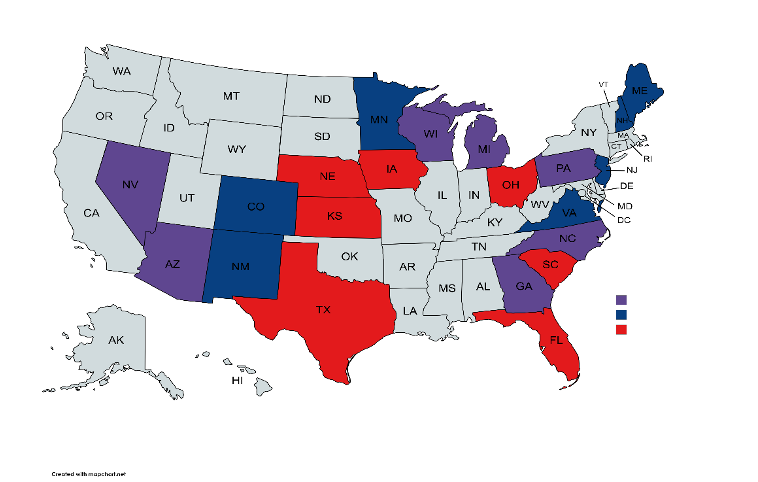
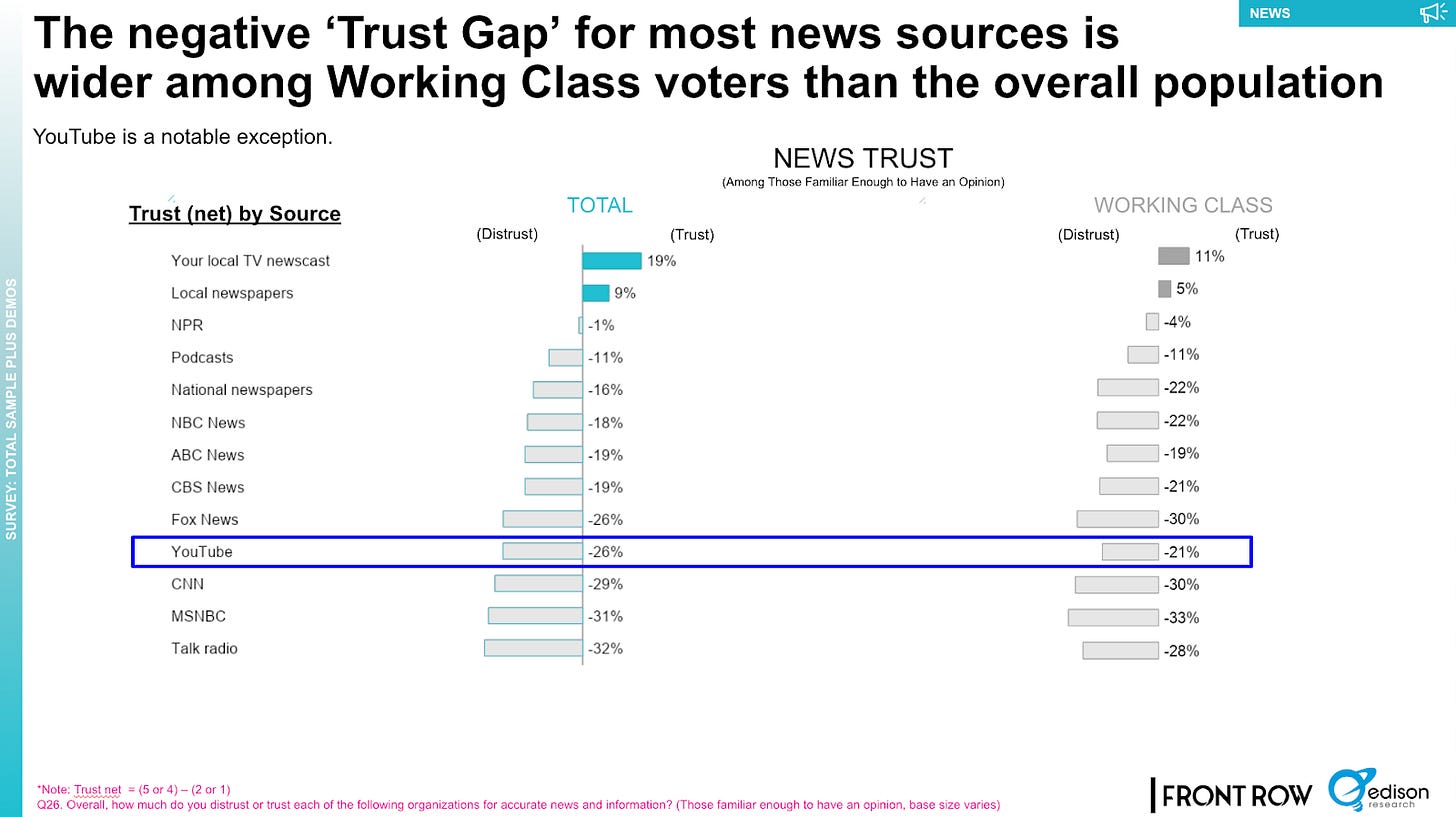



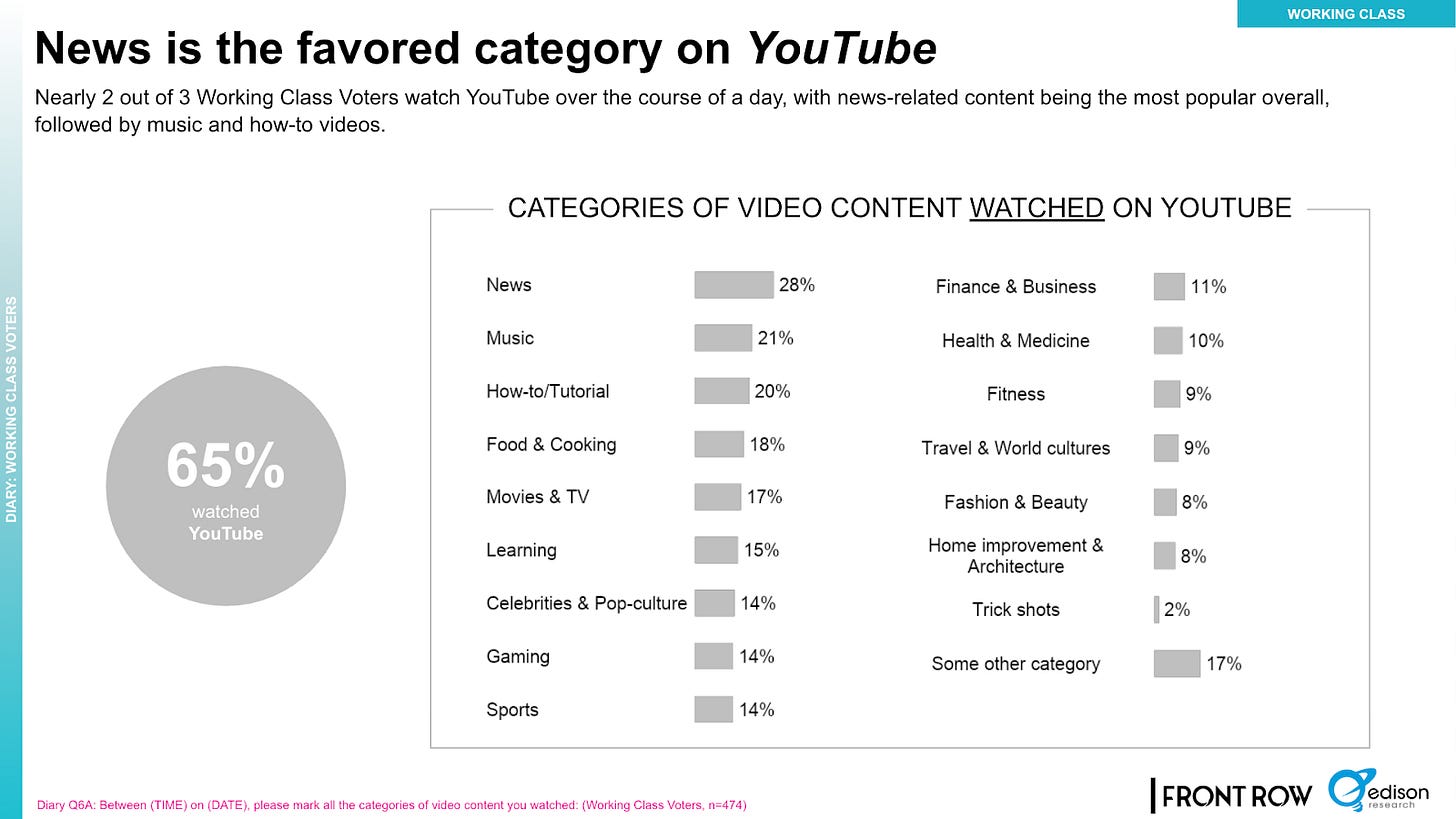
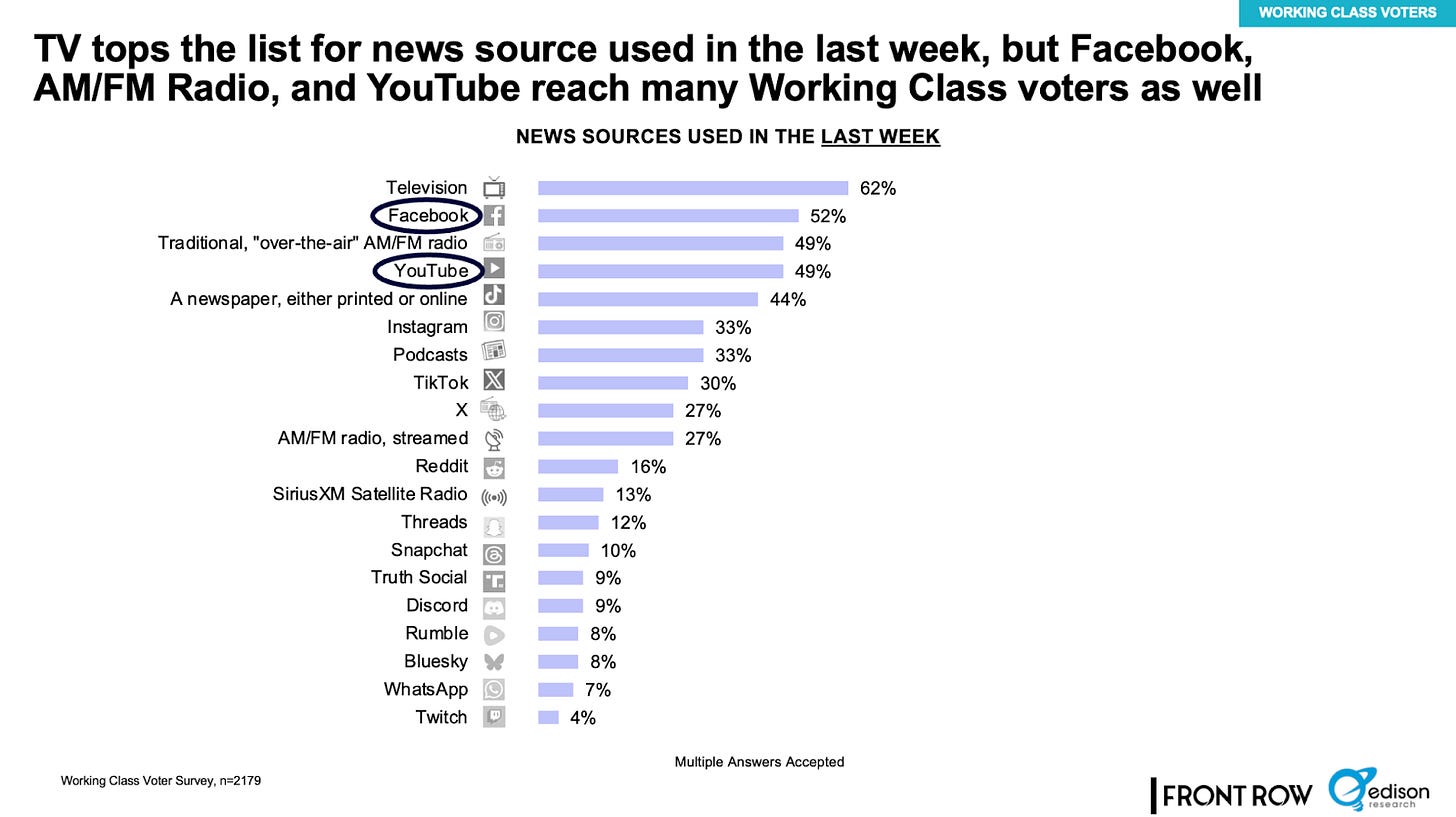
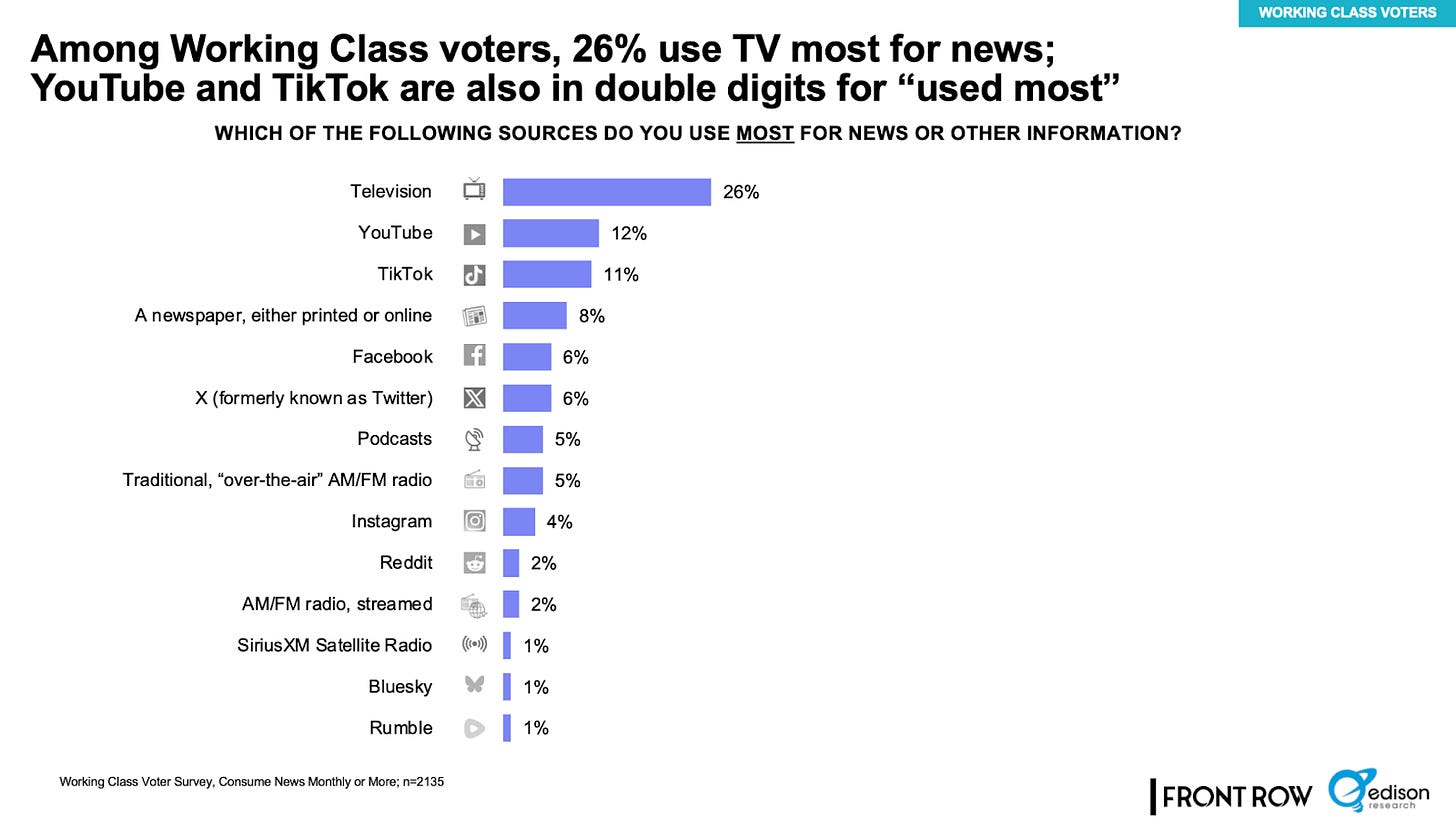
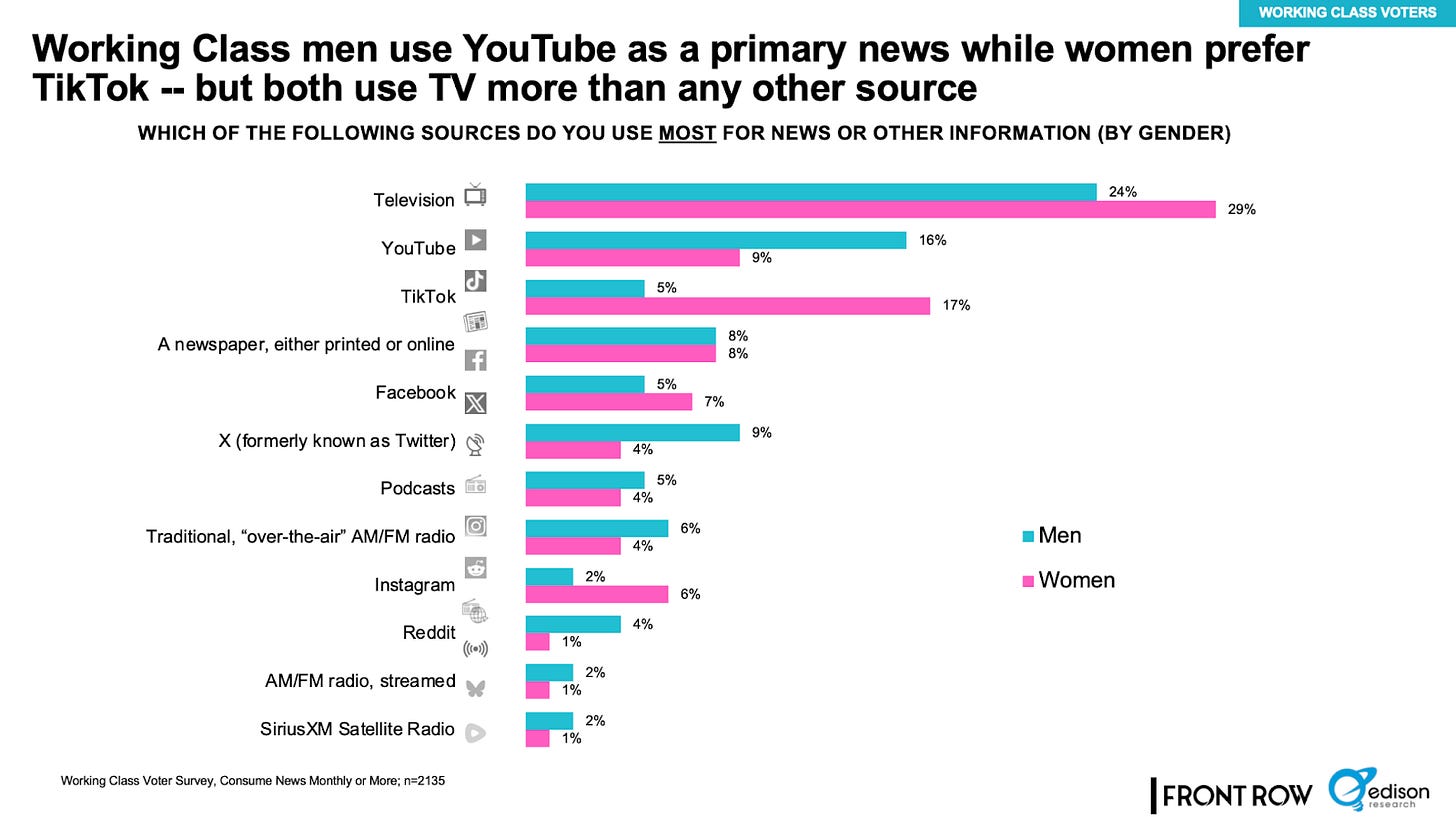
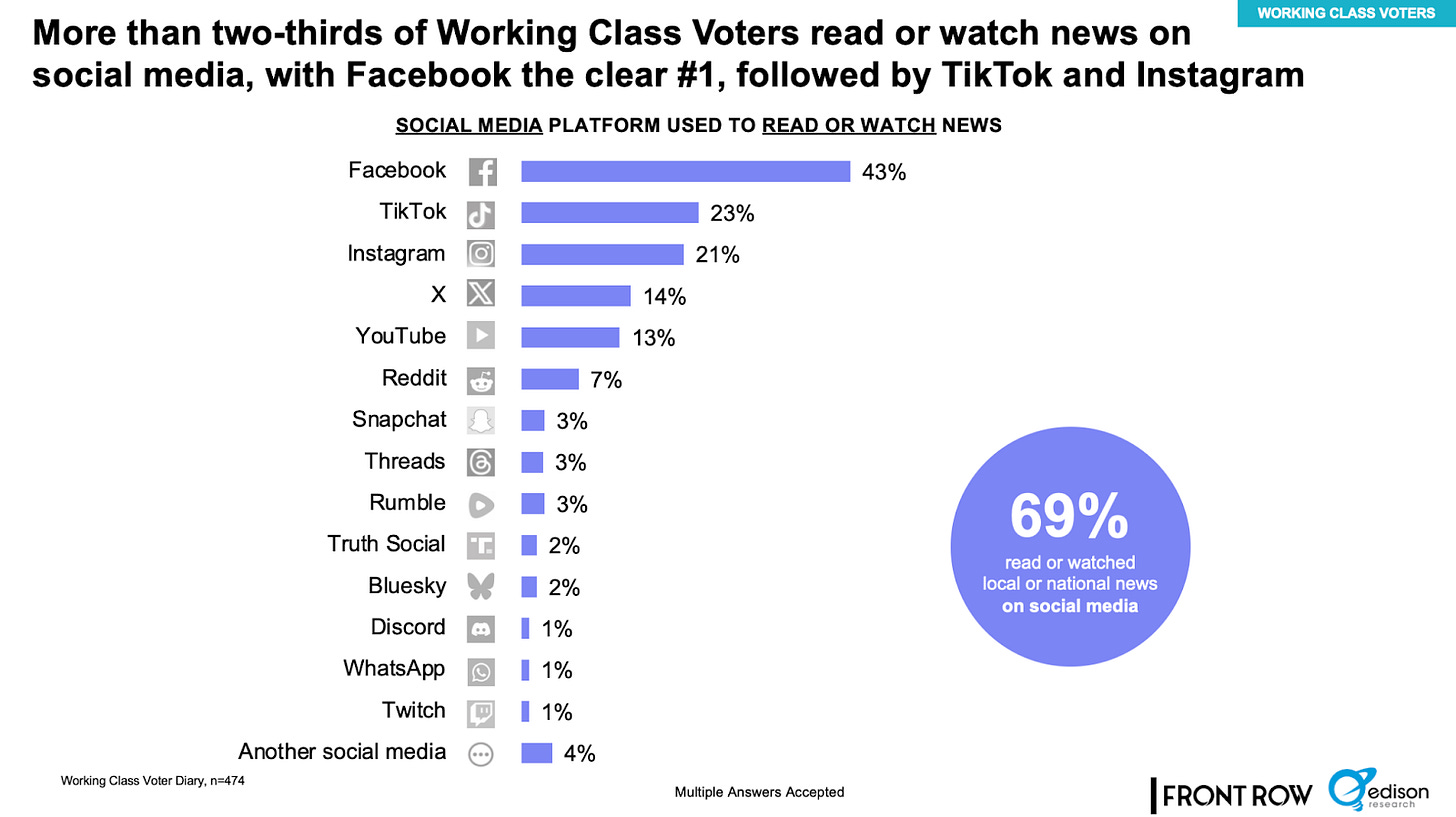
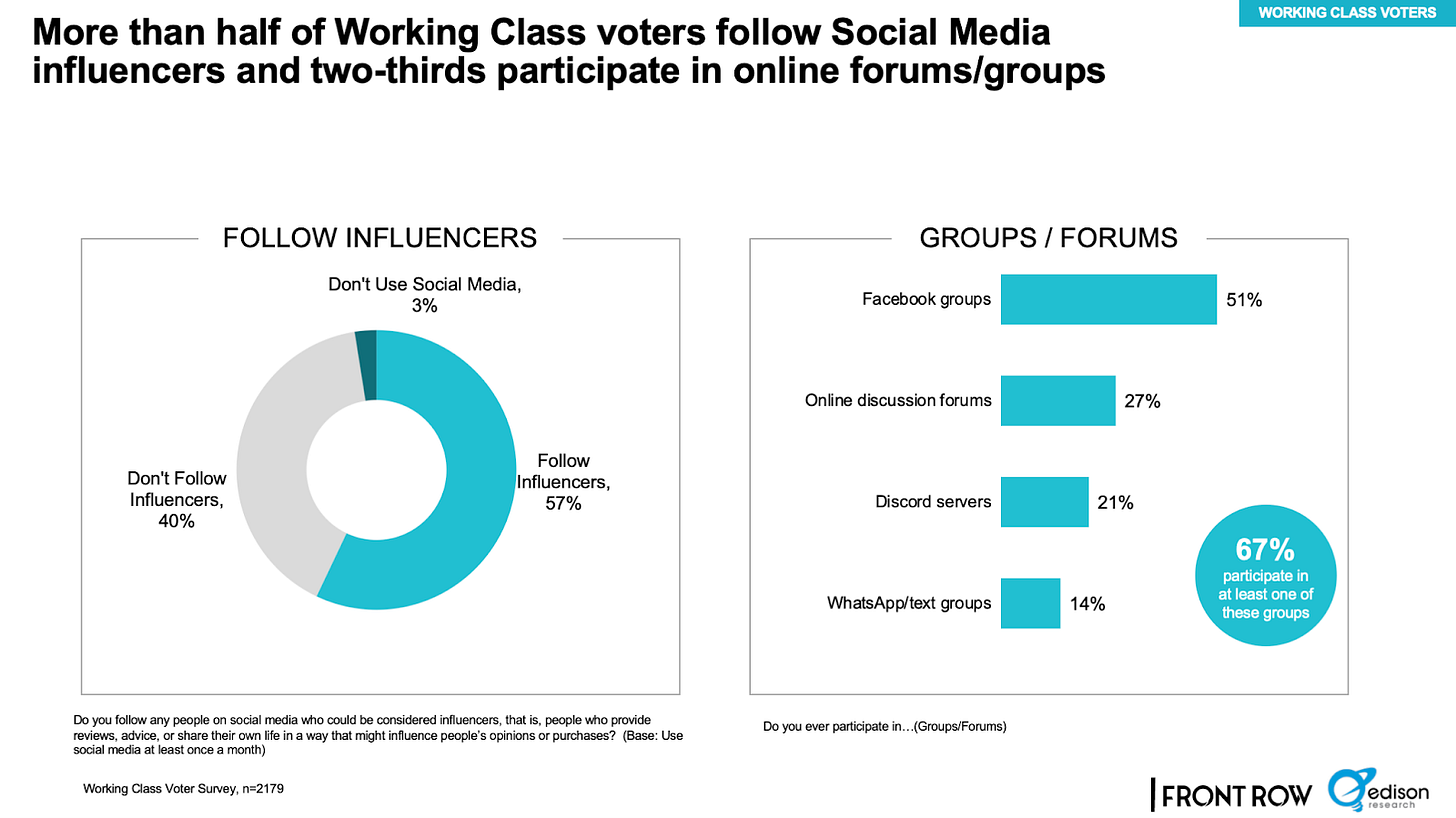
1. You may have covered this already but I would also include Substack which has 30 million monthly subscribers with 3 million paid subscriptions (2024 numbers).
By comparison, Truth Social has 3 million paid subscriptions with 5 million monthly subscribers. Substack however, is focused on news content and has attracted talent from ABC, MSNBC, CBS and CNN, as well as, political commentators of all stripes.
2. The beauty of these platform models is that distribution of messaging no longer requires a network news or circulation format. Essentially, you no longer have to wonder if a press release will either get picked up or lost in the news saturation of the day. You control the message, the timing and the distribution straight to the elector/constituent: allowing you to publish your works for consistency of message.
3. Democratic candidates and congressional members who have official Youtube, Tiktok and Substack accounts, can build out their press contact lists to include NPR, local press and influencer subscriptions. This can either be done by invitation and/or listed as additional contact points in traditional press releases.
There I go again...my two cents.
We must protest on Thursday because “Good Trouble Lives On”. The memory of Troy, AL native John Lewis will be honored to have you participate in this manner. Here are signs for you to print. https://hotbuttons.substack.com/p/protest-signage-free?r=3m1bs